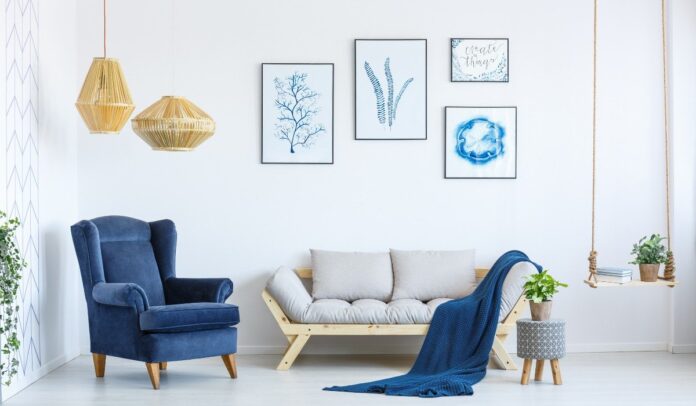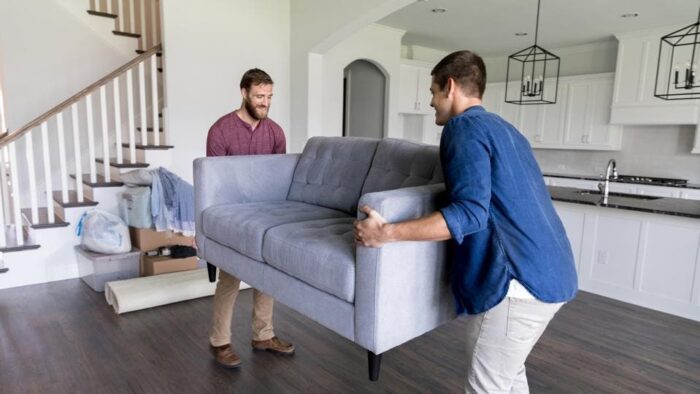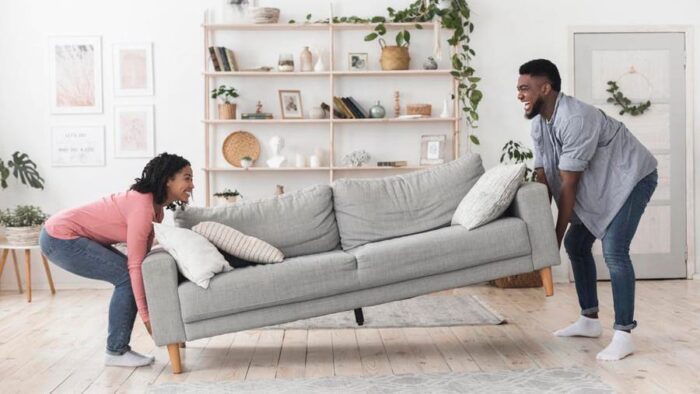
Embarking on the adventure of acquiring furniture, whether for a new home or a much-needed update, can often be a daunting expedition filled with a myriad of decisions. Paramount among these is the decision between investing in new pieces or venturing into the realm of pre-loved or used furniture.
We’ll peel back the layers of this choice, equipping you with the knowledge needed to make your dollar stretch further and create a space that is uniquely yours.
Pros and Cons of Buying New

Diving headfirst into the sparkling allure of new furniture presents a bevy of benefits. Foremost among these is the freedom to tailor your choices to your exact needs, wants, and stylistic vision. New furniture, untouched and unmarred, can effortlessly match your home’s aesthetic, fitting perfectly into your carefully curated design.
Yet, there’s more to purchasing fresh off-the-showroom pieces than just matching hues and patterns. New furniture also offers the promise of durability and longevity, thanks to advanced production technologies and improved materials.
This option typically comes with comprehensive warranties, protecting you from defects and ensuring you won’t have to face immediate additional expenses. Great deals on furniture are always available, you only need to know where to look.
Pros and Cons of Buying Used
Stepping into the past, the used furniture market offers an entirely different array of opportunities and challenges. This path often leads to spectacular finds, treasures that tell a story, and pieces that carry an air of uniqueness. By choosing this avenue, you can discover items that offer character, history, and a charm that new items simply can’t match.
However, for all the allure of a vintage vibe, the pre-loved market can have its pitfalls. The condition of used items varies greatly, with wear and tear being a common concern. Moreover, the lack of a warranty means that you are often on your own should any problems arise. It’s important, therefore, to approach this avenue with caution and an understanding of what to look for.
Assessing Quality and Condition of Used Furniture

Cracking the code for used furniture begins with learning how to gauge quality. A careful eye can often spot signs of sturdy construction such as reinforced corners, firm cushions, or well-fitted drawers in cabinets or chests. Heavyweight can also indicate superior materials like solid wood or quality upholstery.
Still, judging quality goes beyond initial visual inspection. One must also consider the age and usage history of the piece. Older furniture often boasts craftsmanship and materials that outshine their contemporary counterparts. Probing the seller about the item’s history can reveal essential details like the frequency of use or exposure to elements that may have affected its durability.
Where to Find High-Quality Used Furniture
In the digital age, the hunt for used furniture has moved beyond weekend yard sales and dusty thrift shops. Online platforms, like Craigslist, eBay, and Facebook Marketplace, have become treasure troves of used furniture, providing potential buyers with an array of choices from the comfort of their own homes.
Though, the traditional methods haven’t entirely lost their charm. Local consignment shops, auctions, and estate sales are hotspots for quality pieces at reasonable prices. The added benefit of seeing and feeling the item in person before purchasing is invaluable when buying pre-loved pieces, as it allows you to accurately assess its condition.
Tips for Negotiating the Price of Used Furniture

Negotiation is a subtle art that can unlock significant savings when acquiring pre-loved pieces. Start by doing your homework. Research similar pieces to get a sense of a fair market price. Armed with this information, you can confidently discuss price adjustments with the seller.
Yet, negotiation isn’t solely about the price tag. Flexibility with pick-up times, paying in cash, or buying multiple items can be leveraged as bargaining chips. Additionally, pointing out any minor defects or necessary repairs can provide grounds for a discount, ensuring you walk away with a deal that leaves both you and your wallet smiling.
Checking for Authenticity and Durability
Assessing used furniture is akin to being a detective. It requires vigilance and a keen eye for details. Look for maker’s marks or labels that could indicate the manufacturer or origin of the piece. These identifiers could confirm the authenticity of the piece and shed light on its potential lifespan.
Further, understand that durability isn’t just about construction quality, but also about care and maintenance. Ask the seller how they’ve maintained the piece. Was it regularly polished? Kept out of direct sunlight? These questions can give you a sense of how much life the piece still has to offer.
Budget-Friendly Strategies for Purchasing New

Venturing into the realm of new furniture doesn’t mean waving goodbye to your budget. Smart strategies can ensure your cash goes the extra mile. A good starting point is to prioritize your purchases. Invest in pieces that will see heavy use first, such as a quality sofa or a sturdy dining table.
Savings are also often hiding in plain sight in the form of sales, clearances, and discounts. Patience can pay off as most furniture stores have regular sales events. Planning your purchases around these can lead to substantial savings. Remember, delayed gratification often leads to a sweeter reward.
Benefits of Buying New and When to Consider It
Fresh, sparkling pieces aren’t just visually pleasing; they come with a peace of mind that used furniture often can’t offer. New items generally mean high reliability, less immediate maintenance, and a lack of hidden issues. This clean slate can be particularly attractive for those with specific health concerns, such as allergies, as they can be assured the pieces are free of dust and pests.
However, the decision to purchase new should also consider the longevity of your living situation. If you’re settling into a ‘forever home,’ new, high-quality pieces can be a smart investment that will grow with you. On the flip side, if you foresee a move in the near future, opting for cheaper, used items might be more sensible.
Final Reflections
Navigating the world of furniture shopping, be it new or used, can be a thrilling journey filled with discovery and satisfaction. Whether you’re drawn to the promise of new, customized pieces or the charm and history of pre-loved items, equipped with knowledge and a discerning eye, you can create a space that truly feels like home.
Remember, in this quest, balance is key, and often, the best spaces are those that mix the old with the new, creating a harmony that is uniquely you.








